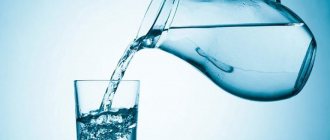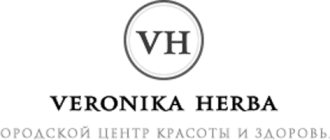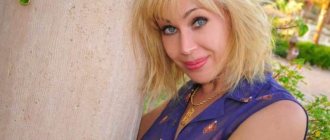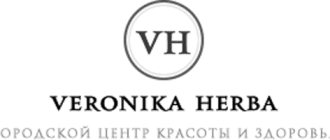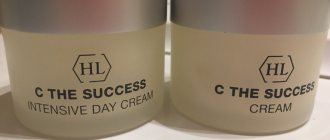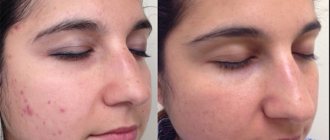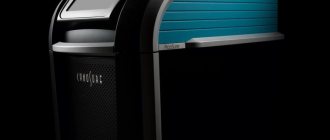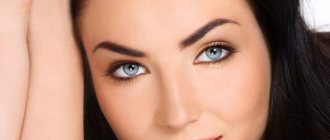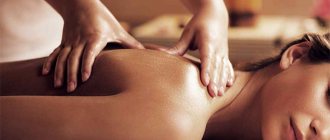It has been established that quantitative indicators of microcirculation significantly decrease with age. Thus, one of the markers of dermal aging is a decrease in the capillary network [1].
Hypertrophy of adipose tissue, to which the tired (pasty) and combined deformation-pasty type of aging is especially susceptible, leads to difficulty in the outflow of lymph and the appearance of lymphatic edema, as a result of which microcirculation and tissue trophism are disrupted [2].
All these processes ultimately lead to the fact that already at the age of 25–35 years, patients have to resort not only to prevention, but also to treatment of premature signs of aging.
To understand the processes leading to changes in the microvasculature, one should recall the anatomy of the lymphatic system of the head and neck.
Anatomical certificate
The lymphatic system (systema lymphaticum) of the head and neck includes lymphatic capillaries, lymphatic vessels, ducts and lymph nodes, which are located outside the dura mater [3].
The lymphatic system absorbs proteins that are too large to enter the venous capillaries. Therefore, the main function of the cutaneous lymphatic vessel is to maintain the balance of fluid and proteins. Lymphatic insufficiency occurs when there is an increased load on the lymphatic network, which inevitably leads to interstitial edema [4].
Lymphatic capillaries, the thin walls of which are built from a single layer of endothelial cells, are the initial link, the roots of the lymphatic system. They are present in all organs and tissues of the human body, except for the brain and spinal cord and their membranes, the eyeball, the inner ear, the epithelium of the skin and mucous membranes, cartilage, splenic parenchyma, bone marrow and placenta. Lymphatic capillaries, connecting with each other, give rise to lymphatic vessels, which have densely located valves that allow lymph to pass in only one direction - from the lymphatic capillaries to the lymph nodes and from these nodes to the lymphatic ducts and trunks [5].
When manipulating in the paraorbital region, two main arteries should be taken into account - the infraorbital and angular. The infraorbital artery is located medial to the pupil line and approximately 1 cm from the infraorbital margin. The angular artery and a branch of the facial artery pass along the inner corner of the eye and anastomose with the supraorbital artery. The facial drainage system is formed by different types of lymphatic vessels, namely:
- Lymphatic vessels of the dermis: diameter 0.014–0.15 mm, valveless. They form a meshwork in the dermis and are the first to receive lymphatic drainage from the skin.
- Pre-collector lymphatic vessels: diameter 0.1–0.3 mm, already have valves and a tubular shape, reminiscent of a bamboo trunk. They “run” from the dermis into the subcutaneous tissue in search of collector vessels.
- Lymph collector vessels: diameter 0.1–2 mm, have valves and are located in the subcutaneous tissue.
The next level of drainage is in the neck.
- Lymphatic trunks: with a diameter of 1.5 to 3 mm, have valves that give them the shape of a rosary, and are located in the deep tissues of the neck.
- Thoracic duct: drains lymph into the venous system at the angle between the internal jugular vein and the left subclavian vein. It also has the shape of a rosary due to the presence of valves [4].
The main differences between lymphatic capillaries and blood capillaries:
- closed at one end
- larger diameter,
- large endothelial cells,
- no basement membrane
- fixing (sling) filaments,
- there are fenestrae,
- not associated with pericytes. Pericytes are cells that are located in the wall of the blood capillary and have a basket-shaped shape. They regulate the size of the capillary lumen and participate in capillarogenesis [6].
Table 1. Classification by stages of lymph flow disturbance (according to: The diagnosis and treatment of Peripheral lymphedema. Consensus document of the international society of lymphology, 2013)
| Stage | Definition |
| 0 (or Ia) | Latent or subclinical condition, when edema is not clinically determined, despite existing disturbances in lymph transport. |
| Stage 1 (mild) | It is characterized by the presence of systematically passing minor swelling closer to the evening hours, which practically disappear by the morning or after rest. Clinical picture: the consistency is doughy; when pressed, a hole remains. The skin is not changed, easily shifts, pale. |
| Stage 2 (moderate severity) | Characterized by the presence of non-disappearing edema, which persists even after an overnight rest. The clinical picture is marked by the proliferation of connective tissue, skin tension, compaction, and poor displacement. |
| stage 3 (severe form) | Disturbances in lymphatic drainage become irreversible, fibrocystic changes occur in the affected tissues, and elephantiasis develops. |
Symptoms of mild to moderate head and neck lymphedema may include:
- Visible swelling of the chin, neck, face, including the eyes and lips.
- Feeling of limited movement in these areas, including the jaw.
Symptoms of moderate to severe lymphedema may include:
- Severe swelling of the face, neck, periorbital region, swelling of the zygomatic region.
- The swelling is dense and hard to the touch.
- Difficulty breathing, swallowing, and speaking.
- Chronic ear pain. [7]
Thus, the lymphatic system of the head and neck plays the most important role in draining interstitial fluid. The anatomical features of the facial lymphatic system make it a particularly delicate area during manipulation. The intervention technique should be based on good knowledge of the anatomical region and the selection of an adequate volume of the administered drug. If these principles are followed, satisfactory results will be achieved while the occurrence of complications is minimized.
Yana Yutskovskaya: “There is no need to fight for the client, medicine is not that case”
Questionnaire Yana Aleksandrovna Yutskovskaya, MD, PhD, head of the course of medical cosmetology of the Faculty of Postgraduate Education at VSMU; deputy Chief physician for medical work at the Municipal Medical Institution "Medical Cosmetology Clinic". Place of birth: Krivoy Rog (Ukraine). Education: Zaporozhye State Medical Institute (1994); graduate school (1997), Vladivostok State Medical University, candidate's dissertation (1997); doctoral dissertation at TsNIKVI (Moscow, 2003), second higher education - “small enterprise management”, Moscow Academy of National Economy under the Administration of the President of the Russian Federation. Career: dermatologist, then dermatologist-cosmetologist at the Municipal University of Internal Affairs of VKL (1995-1997); assistant at the Department of Occupational Diseases at VSMU (1997-2000); head department of hardware cosmetology of the Municipal University of Internal Affairs of VKL (1999); since 2000 - Associate Professor of the Department of Occupational Diseases of VSMU; since 2003 - Doctor of Medical Sciences, Head. course of medical cosmetology FPPO VSMU, head of medicine MUPV VKL. Family composition: husband, son 13 years old. The main personal advantage: “I know how to determine priorities.” The main drawback: “I try to do everything myself.”
The more difficult life is, the worse people look. This is the law. It is not surprising that Yana Yutskovskaya, a young successful woman, Doctor of Science, talks about her business very calmly and optimistically. There is no need to run headlong for profit, fight for the client, or decorate the clinic with expensive decor. If there is anything worth pursuing, it is knowledge, the development of science. The rest will follow. And aren’t you scared by the sad fate of Russian science, which is suffocating from lack of money? Not at all. People have always wanted to be beautiful and have healthy skin. This is not going to the moon. According to Ms. Yutskovskaya, today Vladivostok offers cosmetology services at the level of leading foreign clinics. The doctor’s goal is to turn the city into one of the centers of world aesthetic medicine.
“It’s better to be first in the village than second in the city”
— You are a doctor of science at 32 years old. One can imagine the daily exhausting work. For what?
“This was truly unheard of before.” And today you won’t surprise anyone with youth in science. People have become more purposeful. I personally needed a doctorate degree in order to gain the right of freedom of expression in my specialty. I mean both authority among colleagues and, more importantly, a wealth of knowledge that gives me the opportunity to achieve the desired results in practice.
“Almost everyone wants to study, but not many have the time and energy to do it.” How do you do this?
— All my successes are the fruits of daily work and strict self-discipline. Sometimes I work 24 hours a day. I am constantly driven by the passion to achieve my goals. And here my upbringing and family traditions help me. I was born into the family of a medical professor. I have known what painstaking work is since childhood.
— How is domestic science, and in particular your doctorate, rated abroad?
— Traditionally, the Russian school of dermatology enjoys worldwide recognition. On this basis, modern aesthetic medicine in Russia has achieved great success. Our specialists are appreciated all over the world. For example, they offer me to go to work in the Czech Republic, at a laser cosmetology clinic in Karlovy Vary, or at the Department of Dermatology at the University of Reims in France. There are many offers from clinics in Western Russia. But I am not going to leave either the country or Primorye.
— Isn’t this provincial patriotism?
- Nothing like this. I want to develop a scientific school in Primorye, and there are all the prerequisites for this: promising research, a fertile scientific environment, and enthusiasts who want to do this.
In addition, according to the latest data, the climatic features of Primorye have a very beneficial effect on the skin. Features of the local climate are a serious topic for research. Add to this the presence of radon sources in the region, as well as the possibility of developing cosmetic lines and pharmaceuticals based on seafood.
— Working in a provincial clinic, do you feel a lack of modern equipment?
— Vladivostok has all the latest in world cosmetology technology. Of course, buying expensive devices is associated with financial problems. But we are trying to solve them. Cosmetology all over the world is paid. We work on self-support. With the highest quality of services in the city - at the level of the capital and leading foreign clinics - we have the lowest prices. We invest in development: we buy equipment, train employees. We attract sponsors.
“Many people try to get the most out of old equipment and spend the excess for other purposes. Are you familiar with this logic?
“I was probably brought up differently.” Once I went to Moscow for a conference and wanted to buy an expensive fur coat at the same time. I went to an exhibition of medical equipment and could not resist the new radiosurgery device. The fur coat had to wait.
— Can you be called a non-distressed doctor?
— My confidence in my own future is not based on whether I have money today or not, but on the knowledge that I possess. I am sure that as a specialist I will always be in demand.
— Would you like to open your own clinic?
— In my understanding, the clinic should be similar to the one in which I work - a solid composition of employees with high academic degrees, scientific development of new techniques. A private structure cannot combine scientific research and practice, differentiated by different categories of clients.
— Do you want to say that you don’t dream of limiting yourself to the circle of the elite and freeing up your energy and time for scientific work?
- Of course not. That’s the interesting thing: in a municipal clinic I have more diverse practice, which feeds my research. I know different methods and techniques and can offer each client different treatment and care options. A dermatologist-cometologist must possess a wide range of interdisciplinary knowledge and improve it daily.
“Almost half of the clients are men”
— People of science are famous for their impracticality in real life. Are you bothered by the responsibility of dealing with commercial matters?
“I started doing this because I feel that I can contribute to the development of the clinic. In order for the work to be effective and adequate to modern conditions, I received a second education - economics.
— Do you feel competition from other clinics?
— Before Novosibirsk, we are the only clinic that combines both scientific and practical activities at an equally high level. My colleagues or students work in clinics and medical centers in Vladivostok. And I am glad that more and more such structures are appearing. This has a beneficial effect on the quality of services in aesthetic medicine.
— What about the fight for the client?
- There’s no need to fight for the client. Medicine is not that case. My experience tells me that each client will find his own clinic and his own doctor. And this choice is not related to the quality of interior decoration. The trouble is that the popularity of aesthetic medicine, on the one hand, and the legislative vacuum, on the other, led to the fact that ordinary beauty salons began to offer medical cosmetology services. More than once we have had to deal with people who suffered from the unprofessional approach of such cosmetologists. This is a nationwide problem. Now I am actively participating in the process of creating a legislative framework that would provide for strict licensing of both enterprises and specialists working in aesthetic medicine in the Far East.
— I wonder what your clientele looks like if you divide it by income, age and gender?
— Our clients are people with average incomes, of various age categories. A noteworthy trend is the growing popularity of cosmetic services among men. Today this is almost half of our clients. In the fact that a man wants to look well-groomed no worse than a woman, I see a person showing respect for himself and others.
— How do you feel about gifts from wealthy clients?
— I only accept gifts from my husband. For those who wish to thank me, I offer to help with the equipment necessary for teaching work. Now, for example, the department needs a good multimedia projector.
“An unworthy partner makes a woman unhappy”
— Scientific career, teaching, promotion in the clinic - all this with a child in your arms in the conditions of wild capitalism. What's the secret?
“Of course, I owe my success to my family: mainly to my parents and husband. I am grateful to my family for their understanding and respect for my professional career. Without the support of my loved ones, I would hardly have been able to defend my doctorate. My husband, for example, left his business for a month, went with me to Moscow and helped me calmly do my scientific work. If you have family support, you can achieve a lot. The main thing is to have a desire, to see a goal and accurately calculate the ways to achieve it. You need to be able to plan your life.
— Has self-confidence never led you to a dead end?
— Mistakes, of course, are inevitable. The one who does nothing makes no mistakes. But I didn’t have any strong misconceptions.
— Beauty, fashion, career, strong-willed decisions. Are you perhaps not a feminist?
- Against. I am convinced that a woman’s calling is to submit to a worthy man. An unworthy partner makes a woman unhappy. At work I am a teacher or leader, but at home I am a gentle and caring wife and mother.
How can you build a career if you have to stand at the stove and raise a child?
“It’s very difficult, but a woman must do both.” It is important that mutual understanding and mutual respect reign in the family.
-Who is your ideal woman?
— Catherine the Great. I am attracted to her by the combination of the will to create and the desire for female happiness.
— It is clear that appearance is not the beauty of a person. What is your personal beauty recipe?
— Firstly, you need to lead a healthy lifestyle, no matter how trivial it may sound. But, of course, it’s not the condition of the skin, but the expression of the eyes. And for this, a woman needs to be loved by those close to her. A woman should have a family and love. I will never believe that eyes can glow only from work. Anyone who says that is lying. A woman's eyes light up when her loved one is with her. They are also energized by their children’s successes. Before, I never thought that I would be so happy for my son’s small victories. He recently received a green belt in taekwondo.
— Do you regret that you had to sacrifice attention to your family for the sake of your career?
“There really wasn’t and isn’t enough time for household members.” The more careful you are about the minutes we spend together. I teach my son a very important lesson: to achieve something in life, you need to work hard. He already understands this well.
—What did you want to become as a child?
— In the last grades of school I dreamed of being an international journalist. Once my article was even published in Komsomolskaya Pravda. But then I realized that in medicine I could bring more benefit to people. My father is a professor at the Department of Dermatovenereology. He influenced my choice. Since then, I have never been disappointed in my decision. And I’m calm about my writing ambitions - today I have published 95 scientific papers, I am the author of a patent, co-author of several monographs, my articles are published in Russian and foreign journals.
BLITZ
— Don’t your professional skills interfere with your personal life?
“I managed to train myself not to look at every person as a client. I try to leave professional problems at the clinic.
— If you were offered a million, how would you spend it?
— I would establish a grant for research and training in the field of aesthetic medicine.
— How do you relax in winter?
“My family and I are going to the taiga to sled and ski. In general, we really like to travel around the region. This year we are going rafting down mountain rivers.
Succinic acid and its detoxifying and lymphatic drainage properties
Succinic acid and its salts (succinates) are universal intracellular metabolites that realize their effects in the metabolic reactions of the body. Its significant role in metabolic processes is determined by its participation in the tricarboxylic acid cycle (Krebs cycle) and oxidative phosphorylation processes.
The Krebs cycle is the most important final stage of the metabolism of proteins, fats and carbohydrates, during which the oxidation of acyl groups occurs to convert energy for the body's cells. Acting as a catalyst in the Krebs cycle, succinic acid leads to a decrease in the concentration of pyruvate, citrate and lactate - intermediates that accumulate in the early stages of hypoxia. This is how one of the main effects of succinate is realized – antihypoxic [8].
Succinate receptors GPR91 and SUCNR1 are present in various organs and tissues of the body.
In 2022, A. V. Kupriyanova and Yu. I. Kirova conducted a study during which the succinate receptor SUCNR1 was identified in the skin. Using immunohistochemistry, it was also possible to establish its presence in fibroblasts, keratinocytes, endothelial cells, mast cells, and macrophages. Moreover, the highest level of SUCNR1 expression was found in macrophages.
It is scientifically known that type 1 macrophages (pro-inflammatory phenotype, M1) play a key role in inflammation. Type 1 macrophages are the most active tissue producers of succinic acid, which is associated with activation of glycolytic ATP production in them and partial blockade of the Krebs cycle [9]. The release of succinic acid by M1 macrophages into the extracellular space leads to the induction of SUCNR1 receptors, and through a chain of sequential reactions they are transformed into the anti-inflammatory M2 phenotype. SUCNR1 expression was shown to be increased in M2 compared to M1. Thus, SUCNR1 receptors are involved in the regulation of changes in the phases of inflammation and the formation of the M2 phenotype of macrophages, which express a wide range of growth factors that mediate the mechanisms of angiogenesis, fibroblast proliferation, and the formation of the dermal matrix, which generally affects the speed and quality of reparative processes in the skin. Markers of the M2 phenotype of macrophages are VEGF (vascular endothelial growth factor), TGFb1 (transforming growth factor; immunosuppressive cytokine; limits neutrophil chemotaxis, initiates myofibroblast differentiation and collagen synthesis), FGF2 (fibroblast growth factor) [10].
Therefore, it is possible to act directly on the walls of blood and lymphatic capillaries, strengthening them and normalizing tone, improving the rheological properties of blood, providing antioxidant and detoxifying effects, and eliminating tissue hypoxia through the use of succinates.
The drainage and detoxifying effect of succinic acid could not go unnoticed in cosmetology. Methods of injection lymphatic drainage were developed by S. A. Korytseva and L. A. Balitskaya, as well as the “Venetian mask” technique for the drug Hyalual 1.1%.
Hyaluronic acid, despite its properties of retaining water, not only does not prevent succinate from realizing its properties, but even works with it in synergy. Hyaluronic acid at a concentration of 11 mg/ml and a molecular weight of 2.5 million Daltons serves as a kind of “pump”: it draws lymph from the tissues, transporting it to the lymphatic and blood collectors opened by sodium succinate. Sodium succinate restores the vascular endothelium and normalizes the spastic and atonic type of microcirculation, regulating lymph flow [11]. The concentration of succinate in the preparation is higher than the concentration of hyaluronate – 16 mg/ml. It is the correct ratio of components that provides a powerful lymphatic drainage effect.
The lymphatic drainage technique of Ya. A. Yutskovskaya is based on the structure of the lymphatic system of the face, the pathways of lymphatic drainage and the characteristics of the pasty and deformation-edematous type of aging.
To carry out the procedure, the drug Hyalual 1.1% 2 ml is used.
Injection scheme
The drug is administered intradermally papularly, to the level of the dermis.
The first three rows of papules extend from the inner corner of the eye to the point where the exit of the facial neurovascular bundle is projected into the facial area (approximately 2 cm from the angle of the lower jaw medially).
The second three rows of papules run from the inner corner of the eye to the earlobe.
The third two rows of papules connect the two previous ones immediately under the malar fat pad in the projection of the zygomatic ligament.
Then two rows of papules are inserted along the sternocleidomastoid muscle on each side of the muscle.
The final four rows of papules are inserted along the back of the neck, from the base of the skull along the spine, two rows on each side.
results
This technique was performed on three patients - a man and a woman under 35 years of age with fatigue and deformation-edema type of aging. Results were assessed after 2 weeks.
BEFORE
AFTER
BEFORE
AFTER
BEFORE
AFTER
After the procedure, patients noted improvements in the periorbital area - a decrease in “blueness” under the eyes, a decrease in the nasolacrimal groove, and a decrease in swelling in the area of the malar fat pads.
Age categories of patients and purpose of using this technique:
| 25–35 years | Prevention |
| 35–45 years | Treatment |
| 45+ | In combination with other techniques |
conclusions
Injection lymphatic drainage according to the method of Ya. A. Yutskovskaya is an anatomically based and effective method of treating the symptoms of lymphatic edema in patients with tired (pasty) and deformation-pasty type of aging. The advantages of this technique are also: the convenience of the injection technique for the doctor, safety, and the absence of long-term rehabilitation after the procedure.
By applying knowledge of the characteristics of the lymphatic system of the face and neck in practice, using the technique of injection lymphatic drainage with Hyalual 1.1%, we can carry out pathogenetically based prevention of premature aging, which is a priority of aesthetic medicine at the present stage.
Our further goal is to develop protocols for combining this technique with hardware procedures for patients with fatigued (pasty) and combined deformation-pasty type of aging.
In the project's boundaries:
- Participation in major international congresses as speakers, moderators, and invited experts. The teachers' arsenal includes work in sections, satellites, video reports and practical master classes, round tables.
- Organization of seminars, trainings, master classes, hand placement;
- Conducting on-site regional educational programs on injection technologies;
- Publishing activities and cooperation with professional publishing houses;
- Creation and popularization of educational video materials;
“Professor Yutskovskaya’s School” integrates the best practices of domestic aesthetic medicine into the international scientific community.
Today, the “School” concept is actively working in the CIS countries.
